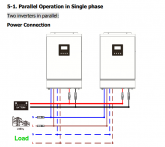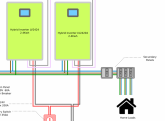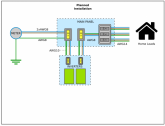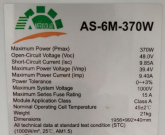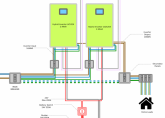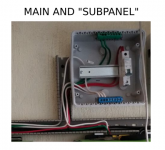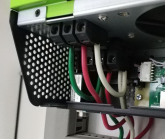mrdavvv
Solar Enthusiast
- Joined
- Jan 14, 2020
- Messages
- 404
Hello!
So im cabling my inverters:

And i just realized that the cables coming from the utility to my main panel are too thin!, house its old and the electrician decided that 2xAWG14 its enough for a full home.
I don't have heavy loads, so all this time i didn't have a single problem, however with the new inverters and my 12 x 380W panels i have almost 4000W of PV energy. The question is, in grid tie systems, are this inverters capable to backfeed to the grid the full 4000W of maximum PV power? (Considering no active loads at home, and 100% backfeeding).

If thats the case, im in problems and should change said cables:
- 2xAWG14 THW are capable of 20amps.
- If inverters can output 4000W to the grid (probably less from the losses), i should have at least 2xAWG10 for 40A!..
------------
Bonus questions!.
1.- Can anyone confirm if the inverters have anti-islanding protection?. I will test them but would be nice to know before hand!.
2.- Does anyone by any chance have the CE Certificate of LV2424 and the datasheet?. Supplier is slow to answer and i would need them to check with the utility company if i can interconnect with them.
So im cabling my inverters:

And i just realized that the cables coming from the utility to my main panel are too thin!, house its old and the electrician decided that 2xAWG14 its enough for a full home.
I don't have heavy loads, so all this time i didn't have a single problem, however with the new inverters and my 12 x 380W panels i have almost 4000W of PV energy. The question is, in grid tie systems, are this inverters capable to backfeed to the grid the full 4000W of maximum PV power? (Considering no active loads at home, and 100% backfeeding).

If thats the case, im in problems and should change said cables:
- 2xAWG14 THW are capable of 20amps.
- If inverters can output 4000W to the grid (probably less from the losses), i should have at least 2xAWG10 for 40A!..
------------
Bonus questions!.
1.- Can anyone confirm if the inverters have anti-islanding protection?. I will test them but would be nice to know before hand!.
2.- Does anyone by any chance have the CE Certificate of LV2424 and the datasheet?. Supplier is slow to answer and i would need them to check with the utility company if i can interconnect with them.
Attachments
Last edited:




